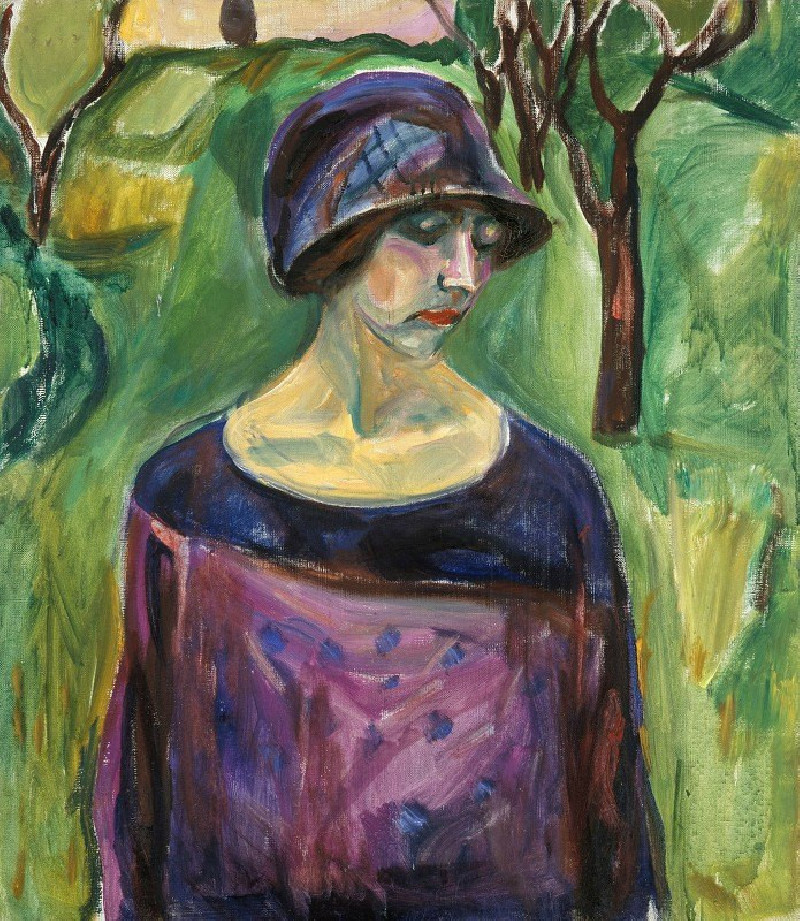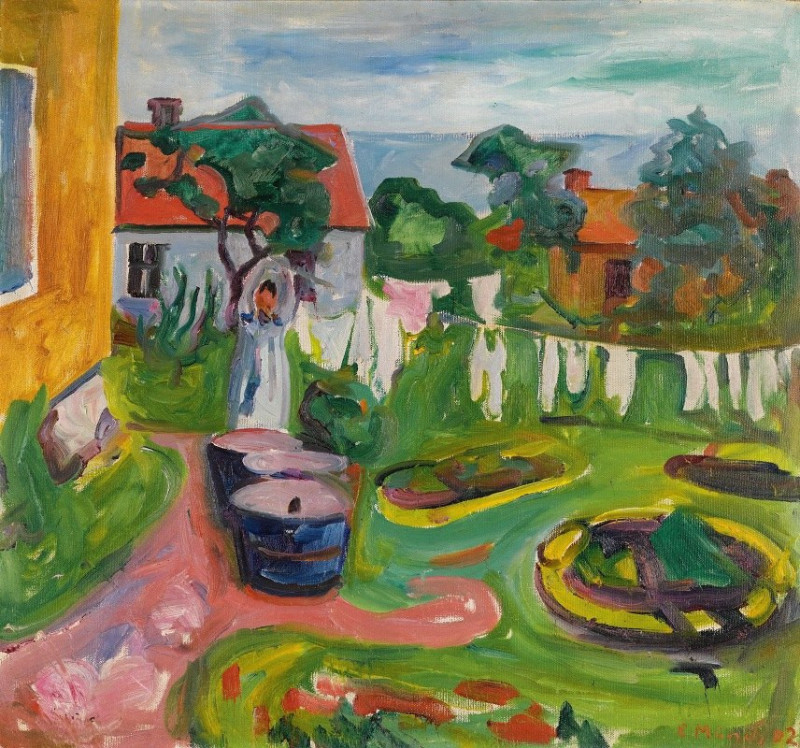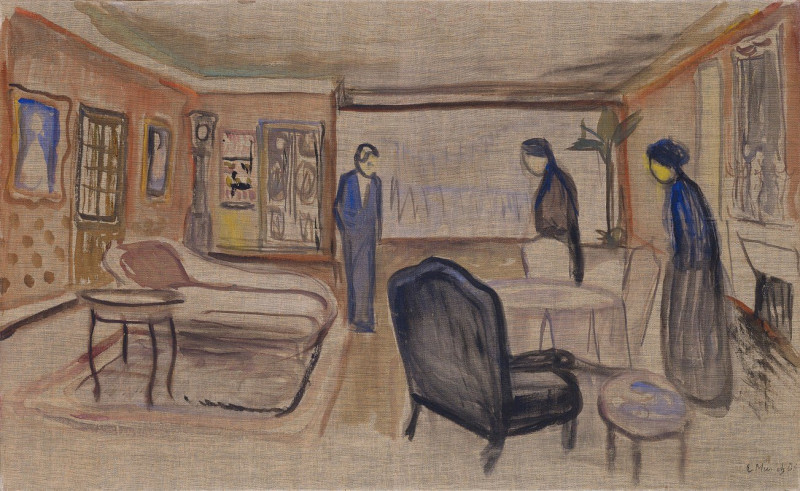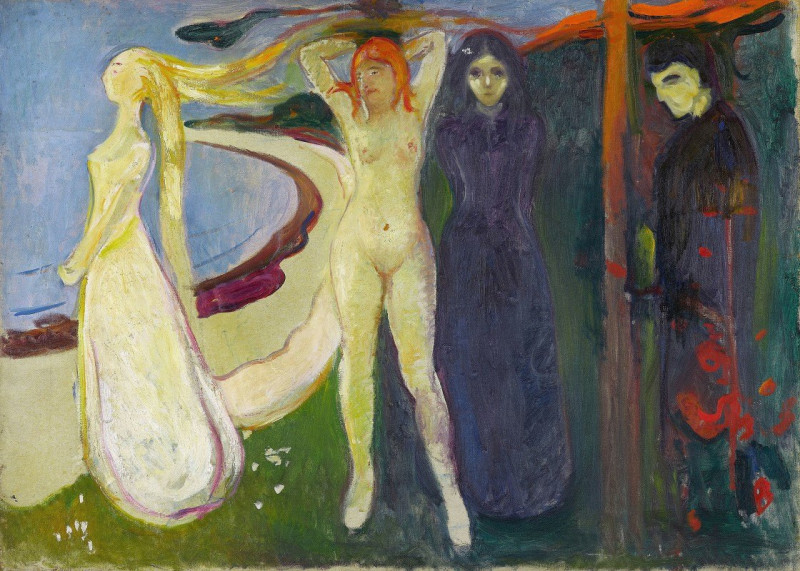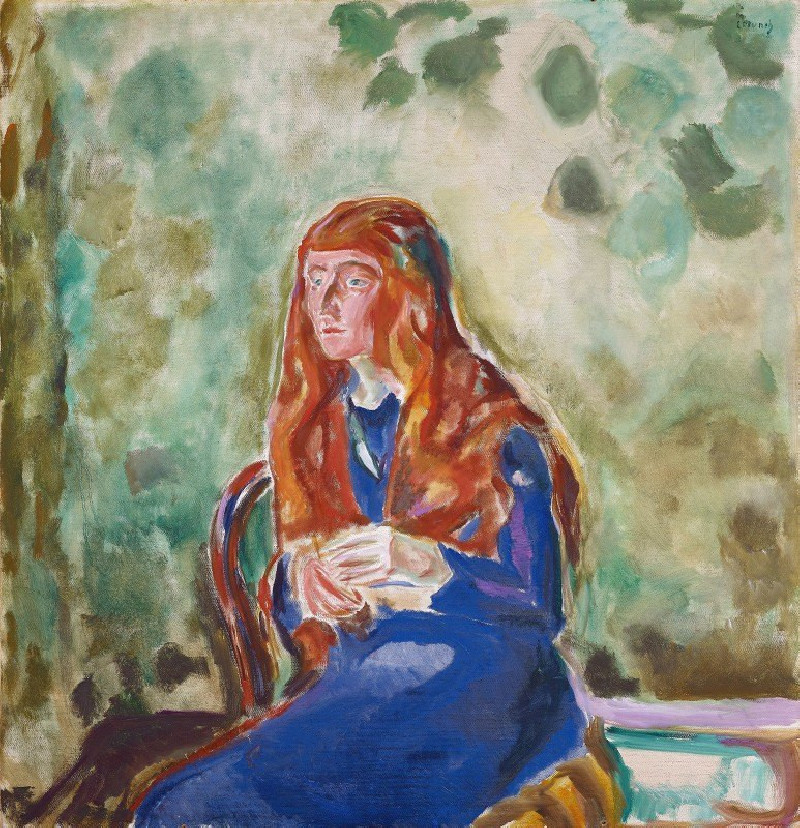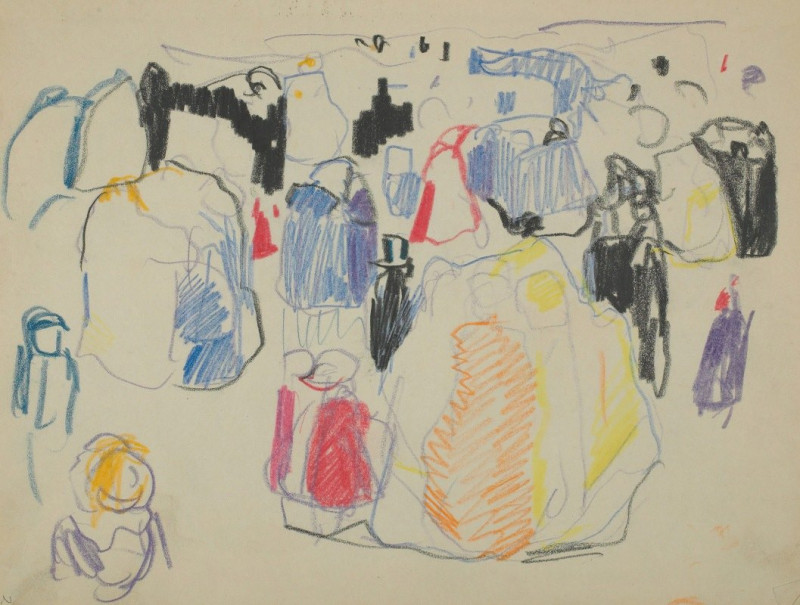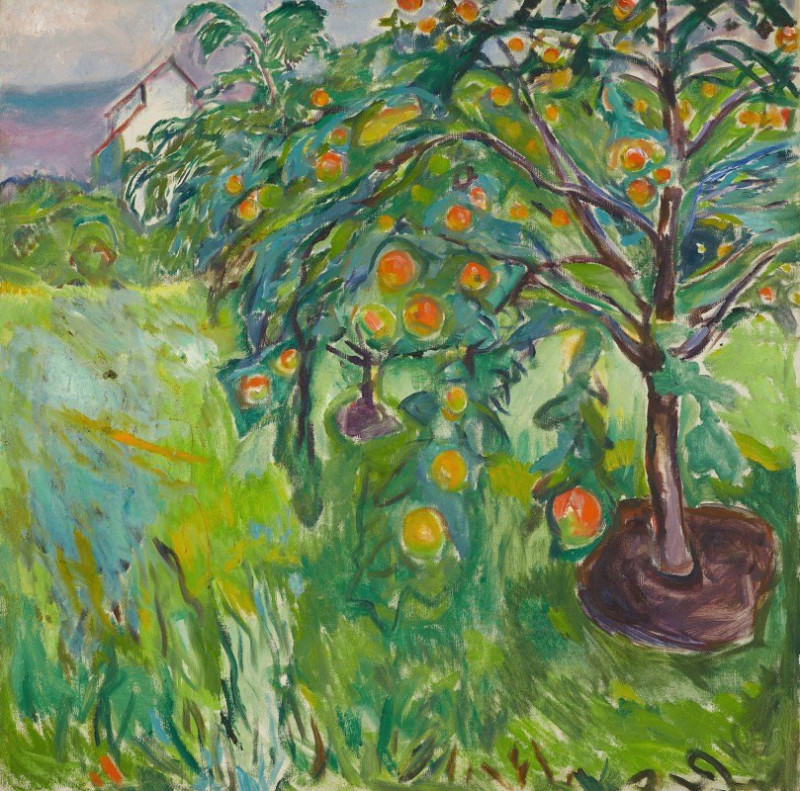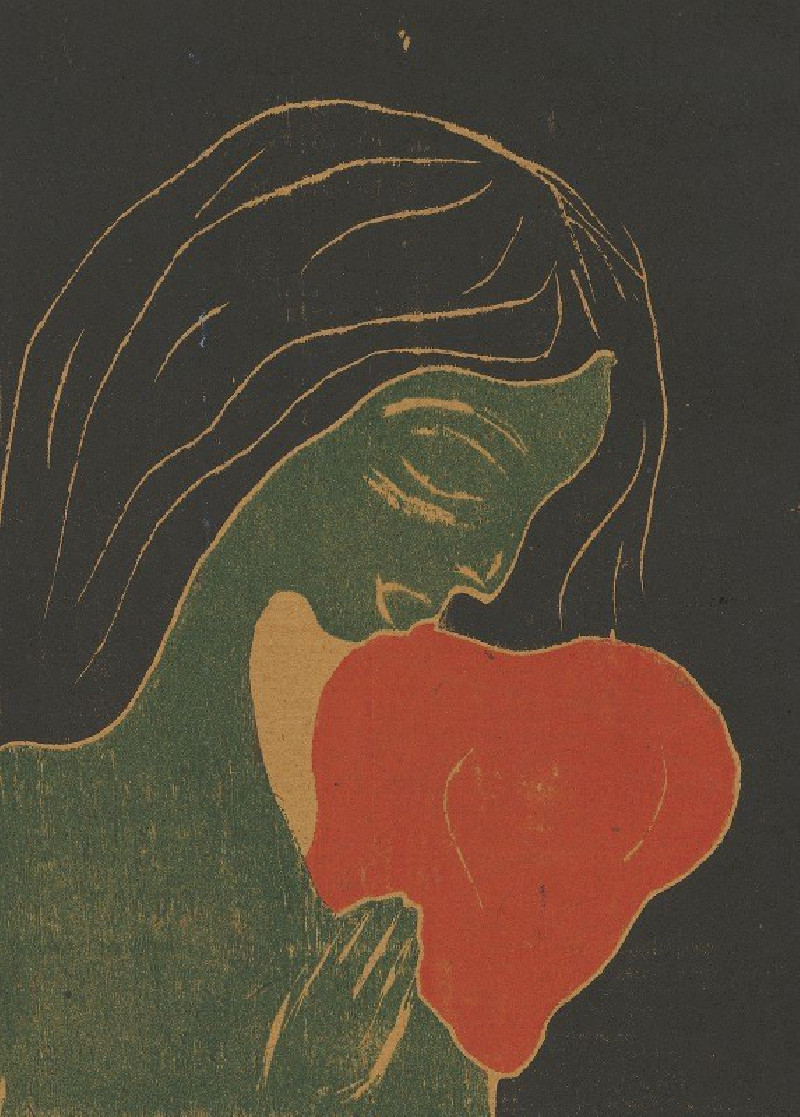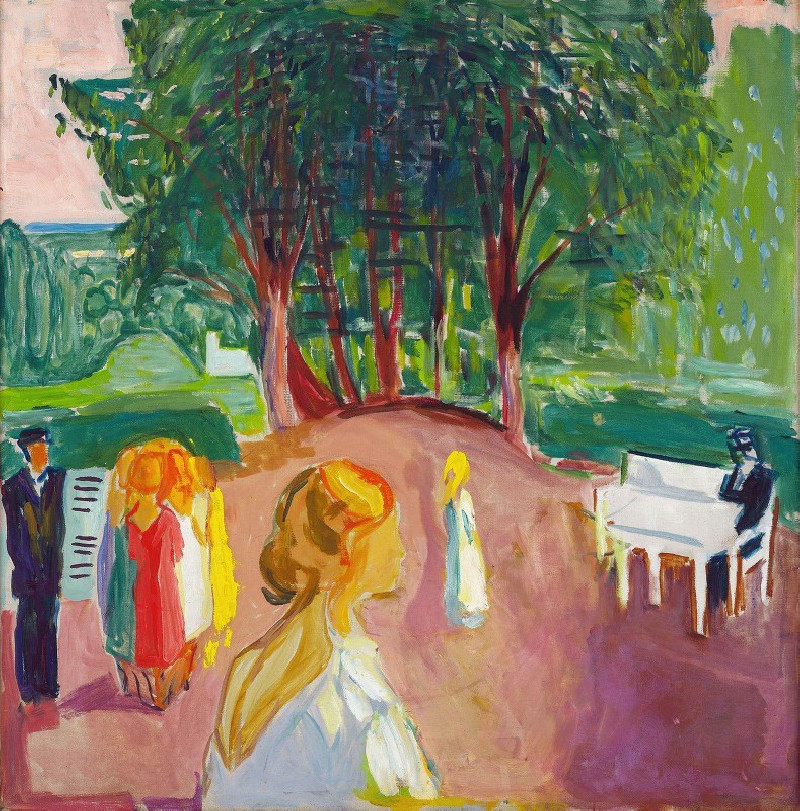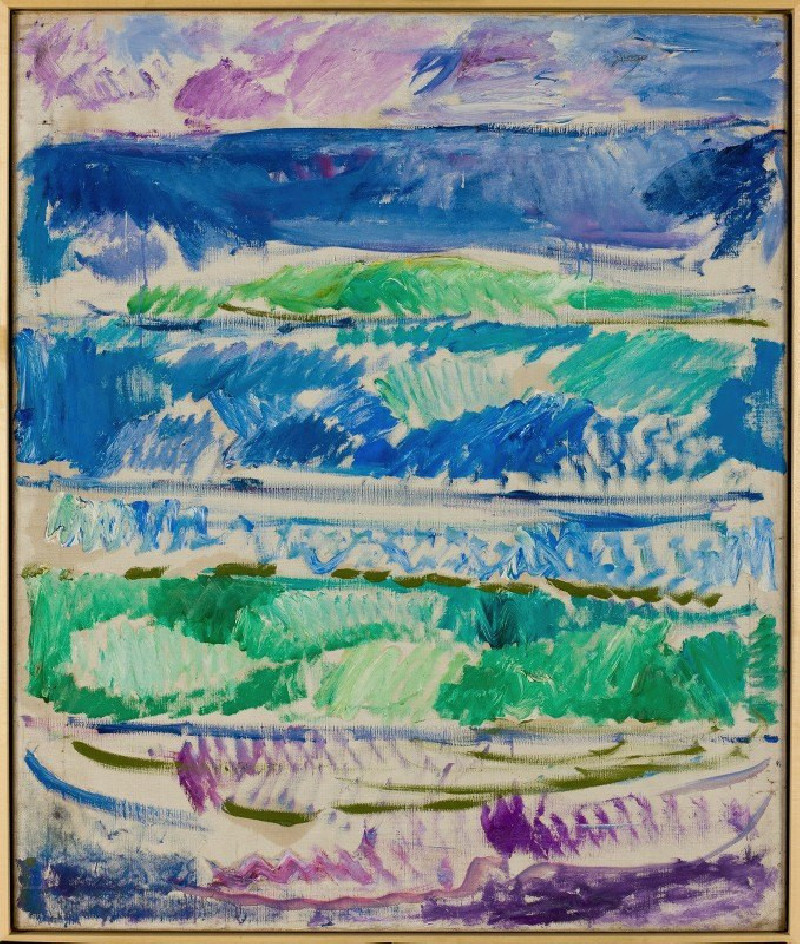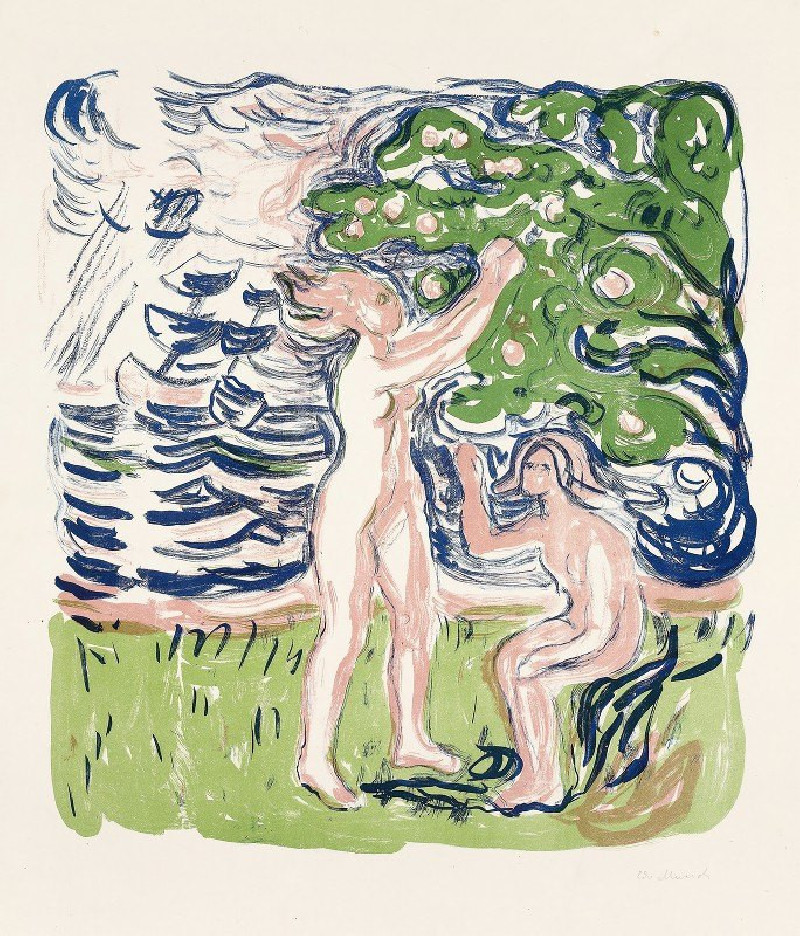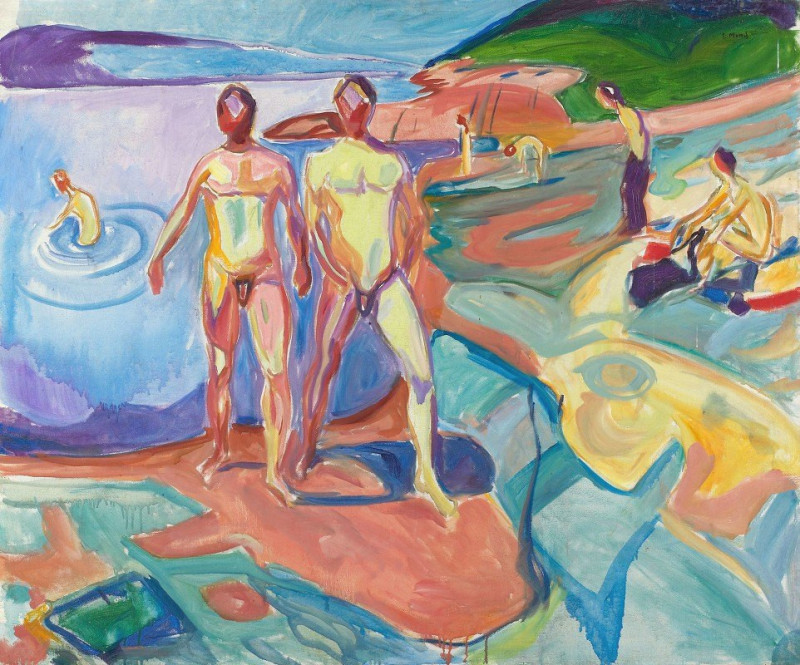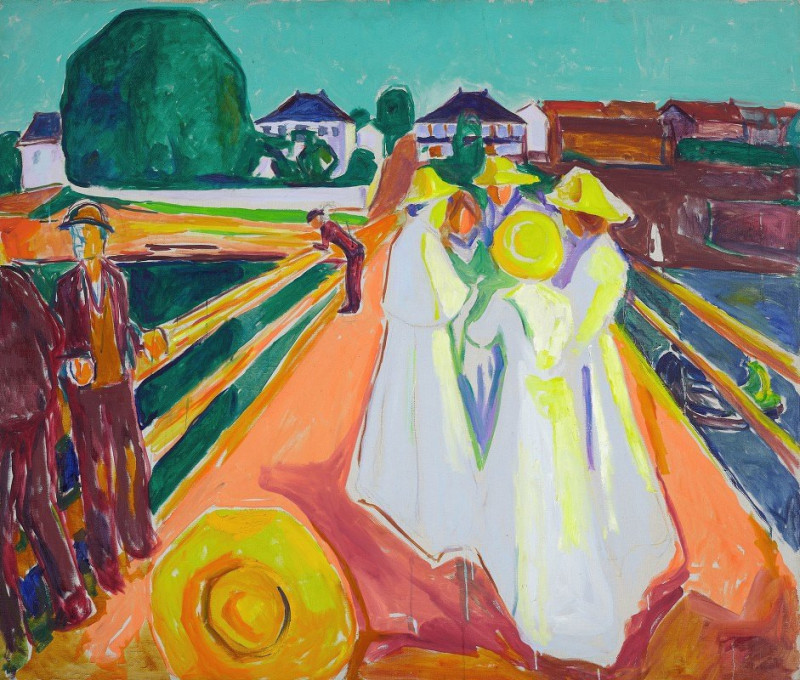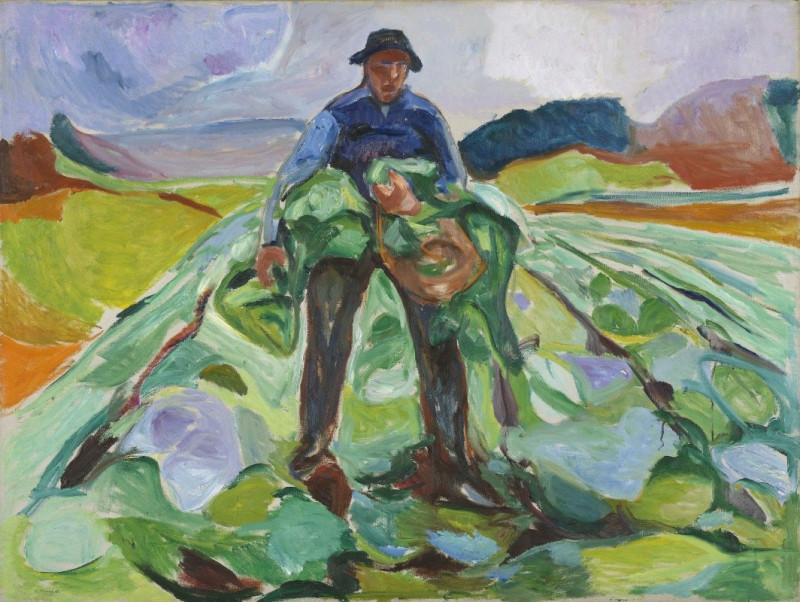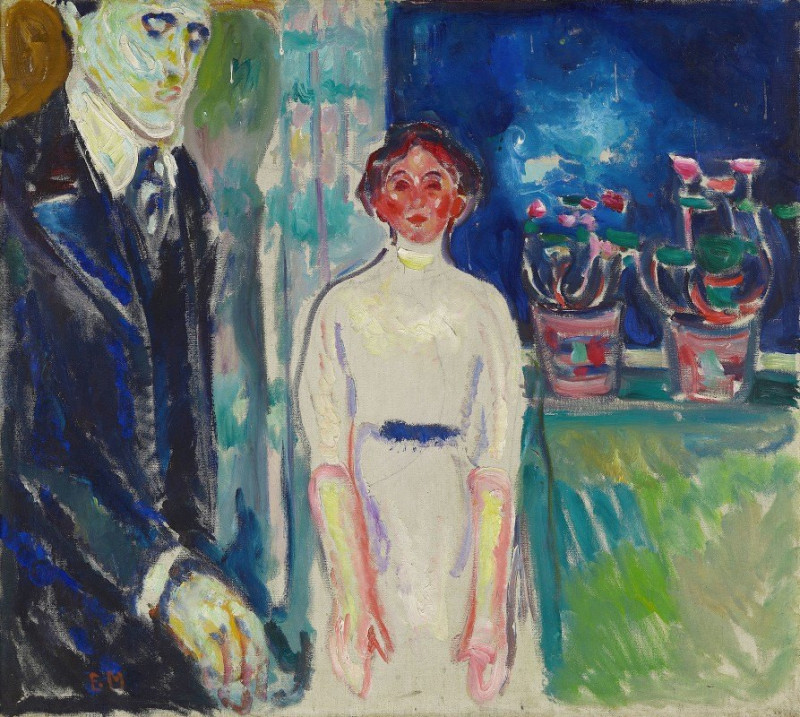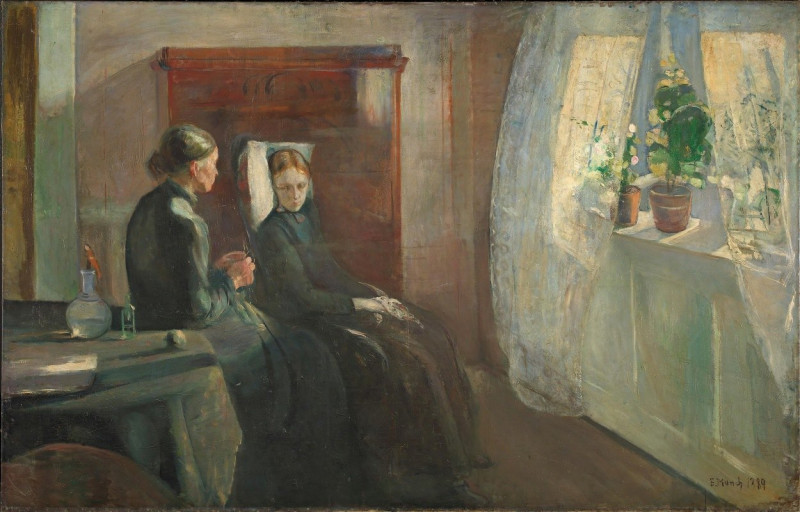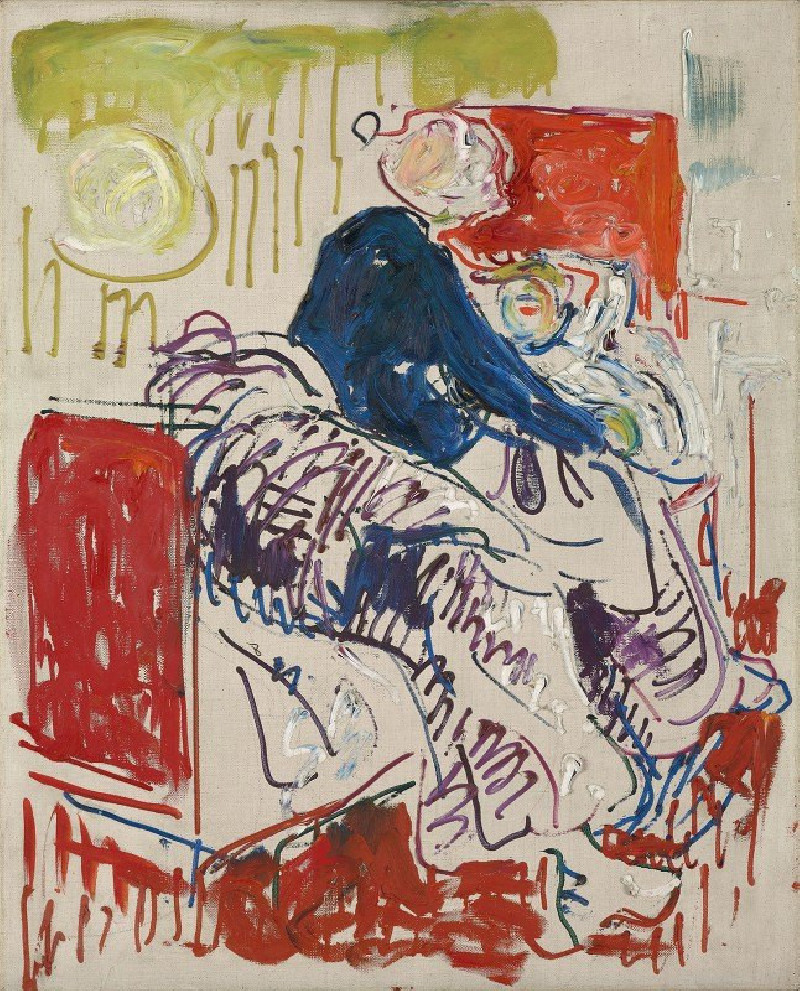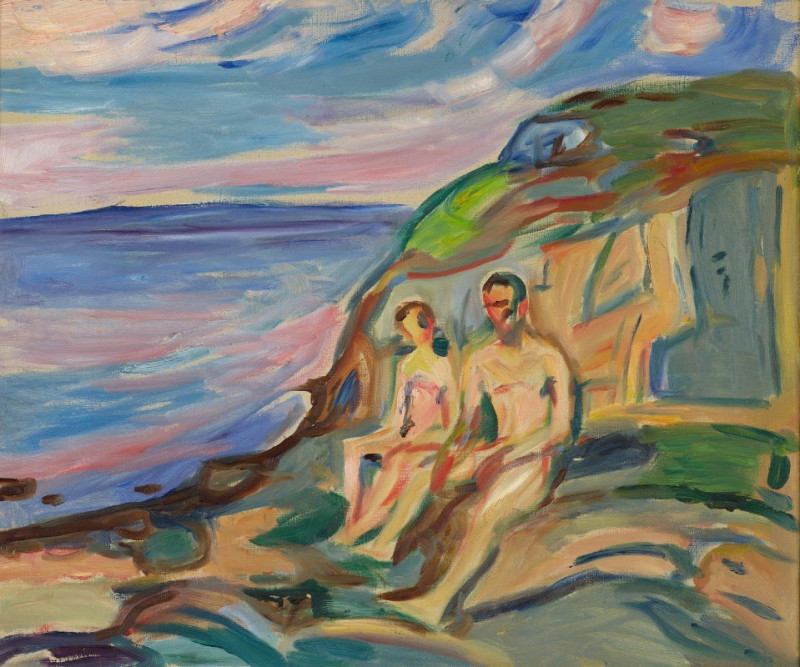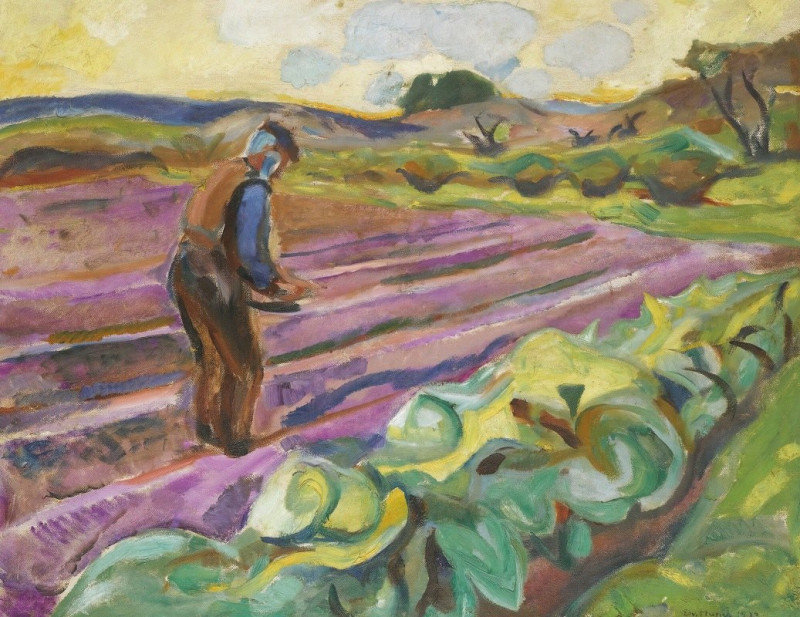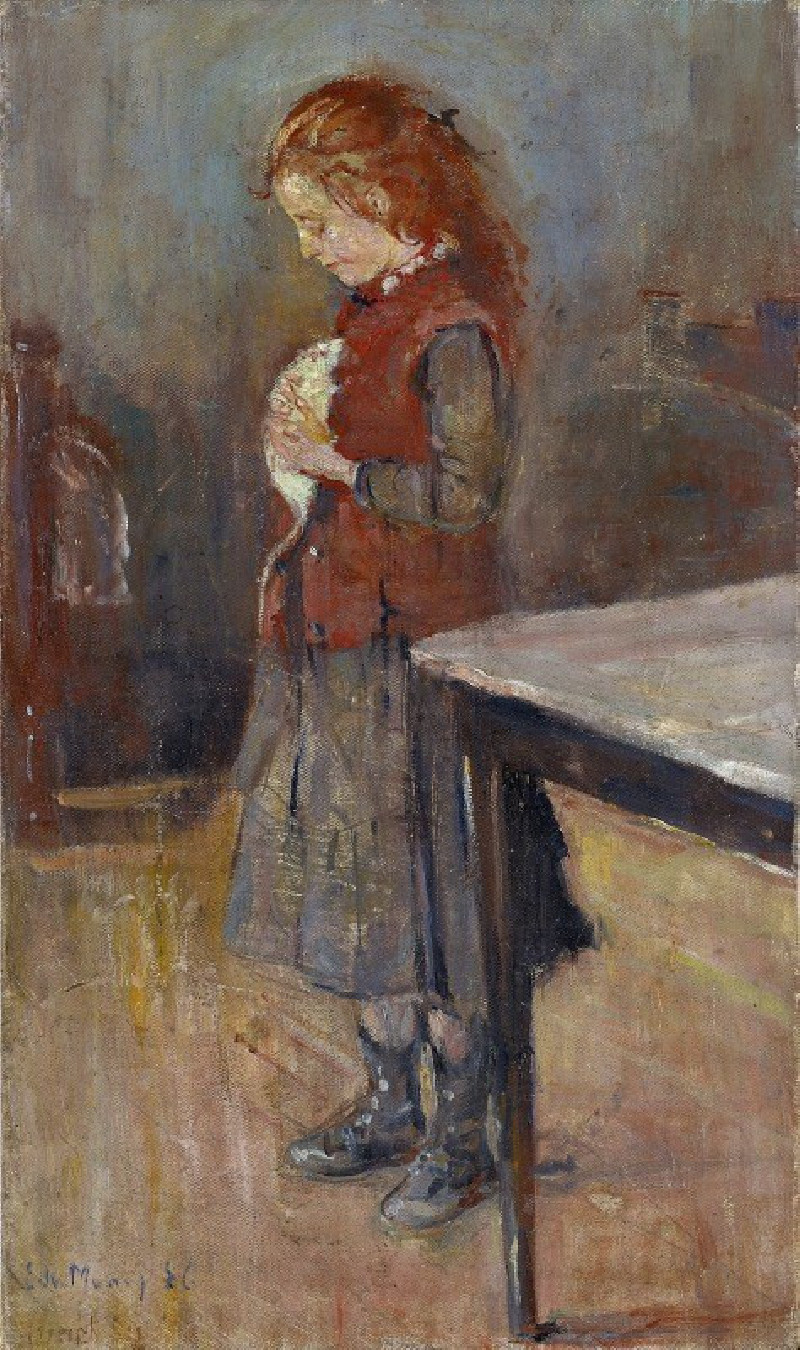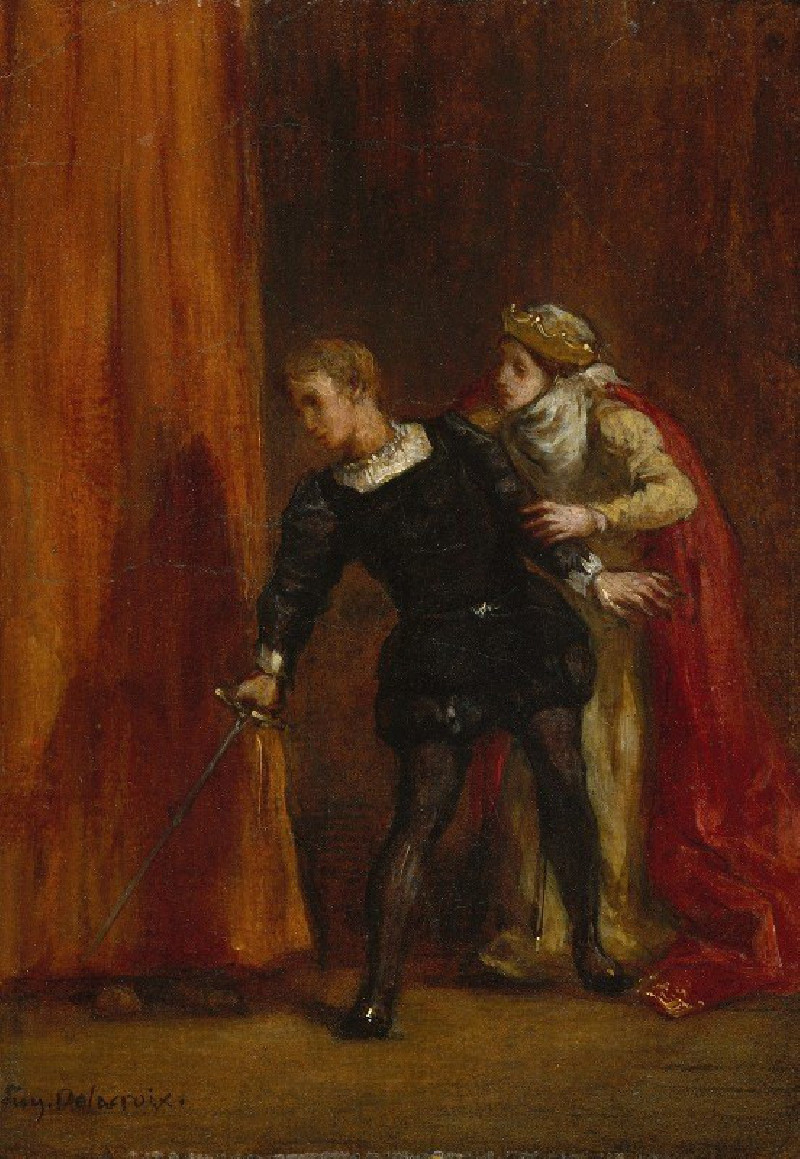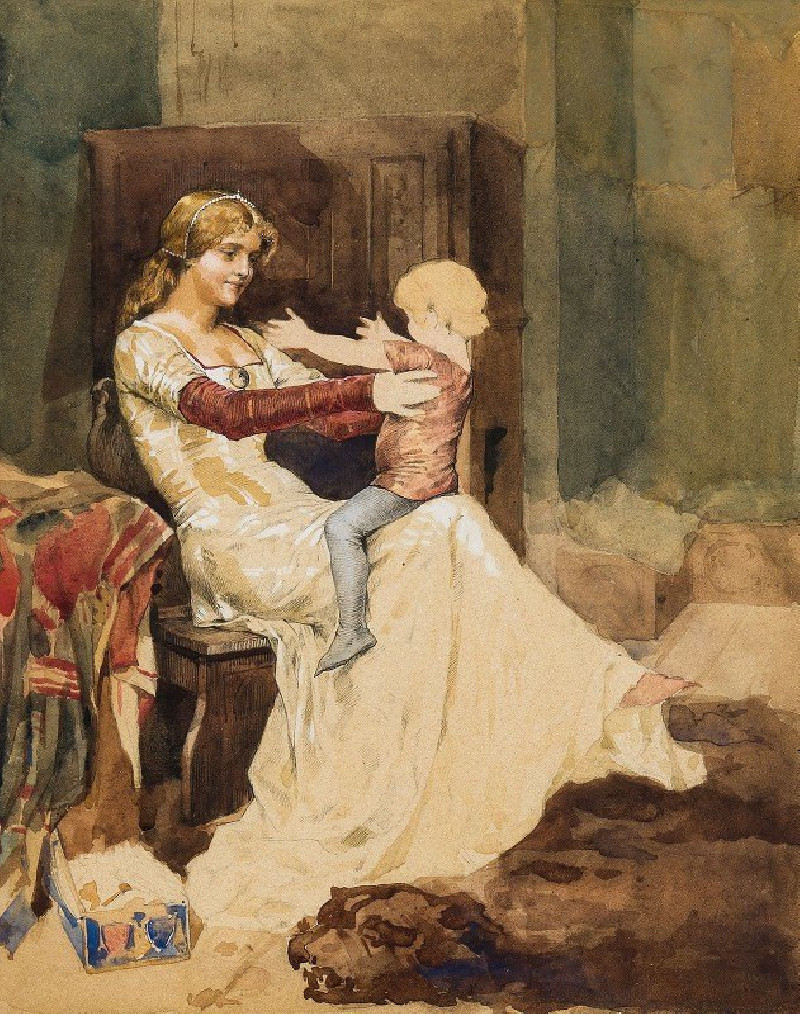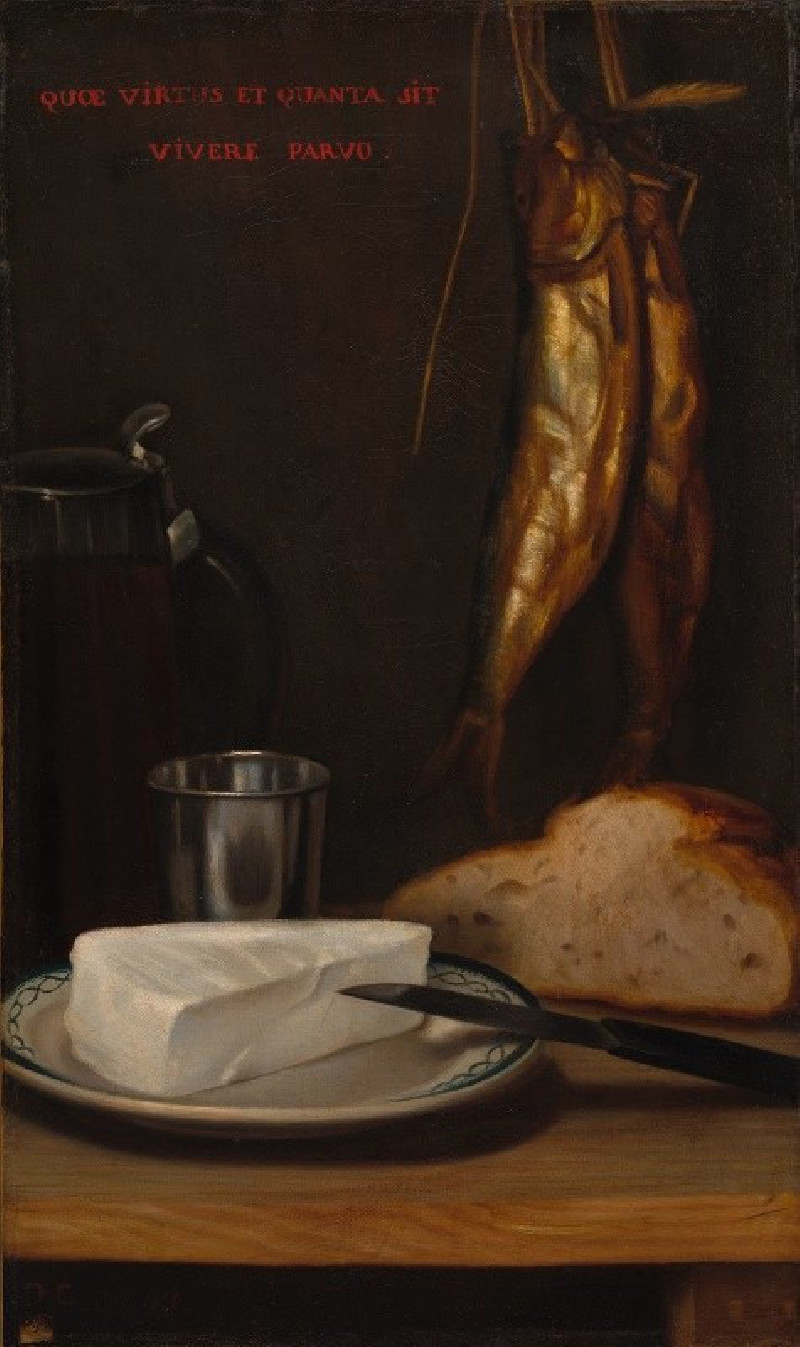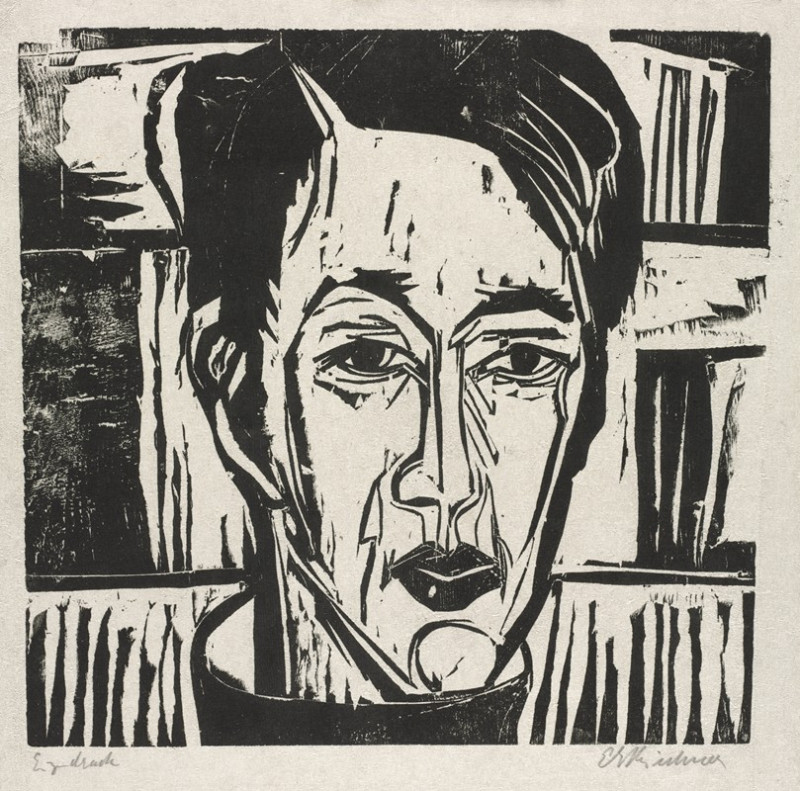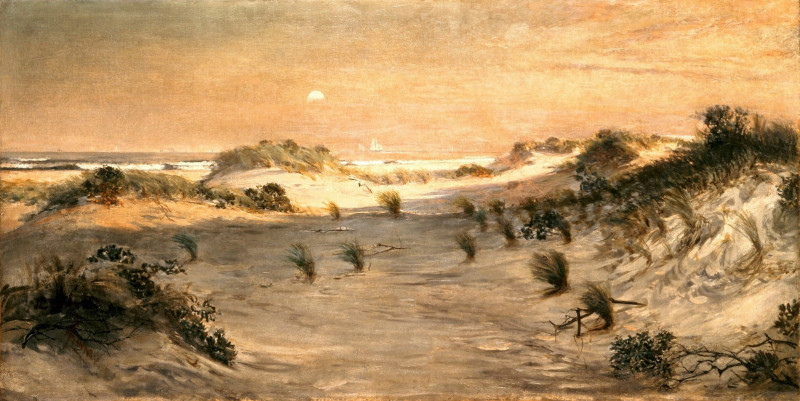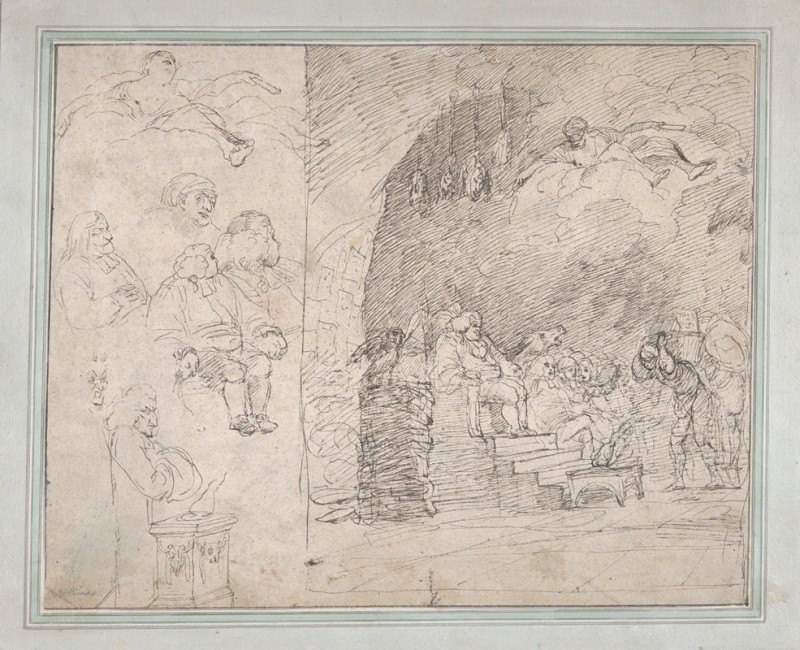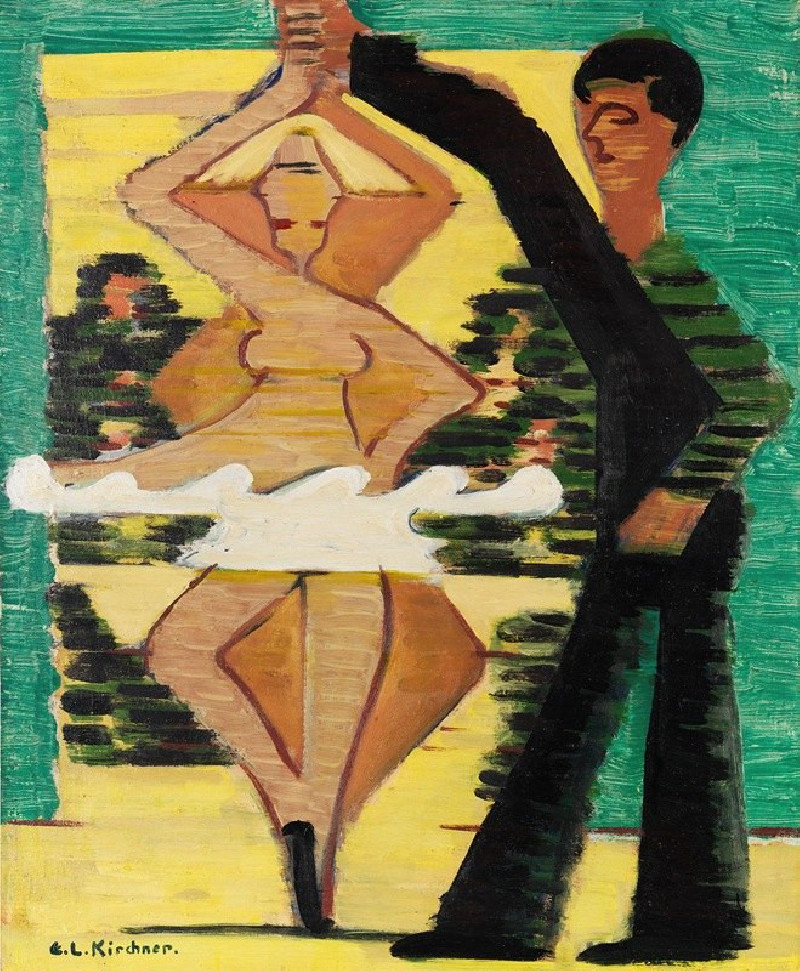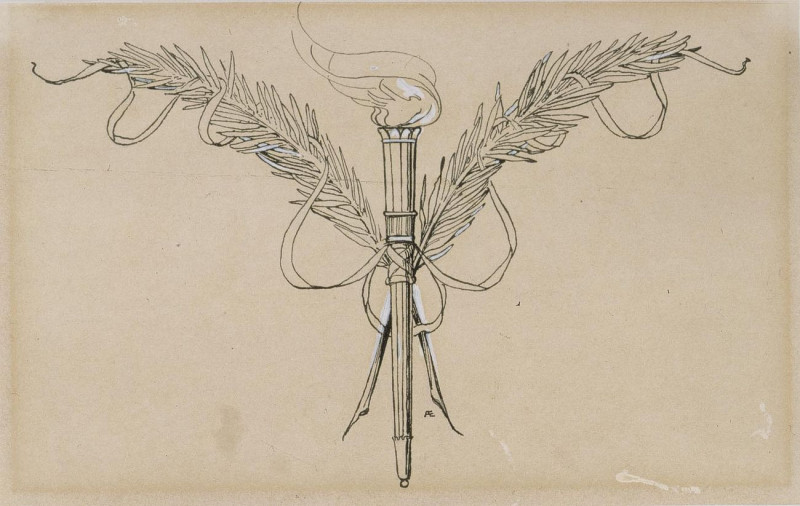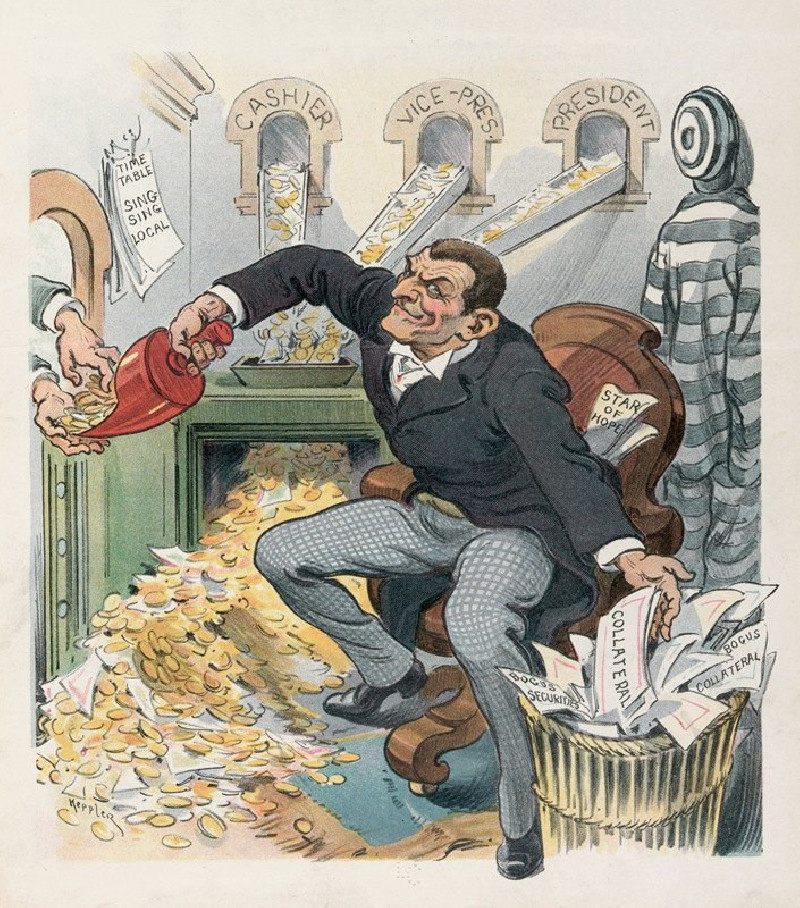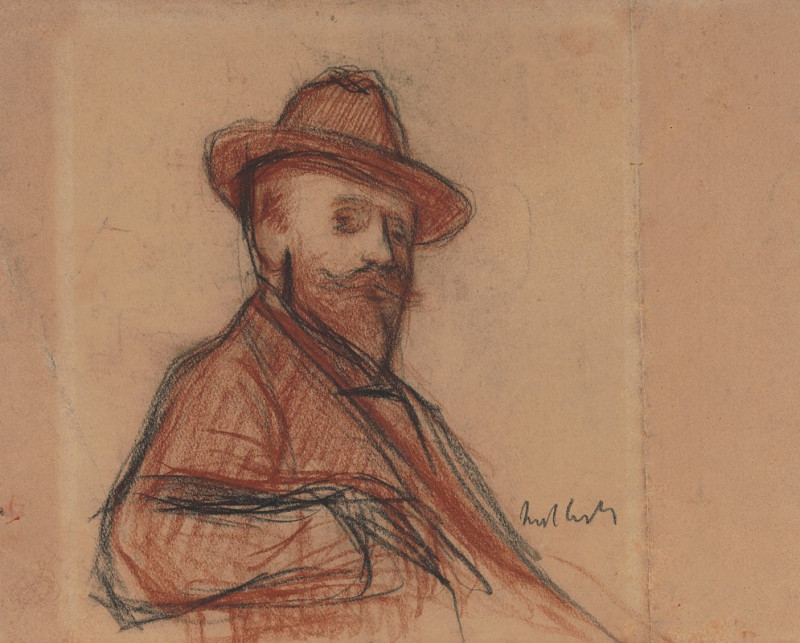Birgit Prestøe in the Garden (1924–30)
Technique: Giclée quality print
Recommended by our customers
More about this artwork
The painting "Birgit Prestøe in the Garden" by Edvard Munch presents an expressive and colorful portrait of a woman set against a vibrantly painted garden backdrop. The subject, Birgit Prestøe, is depicted with a contemplative or somber expression, wearing a fashionable hat and a patterned sweater, which suggests the era of the 1920s to 1930s. Her pose is almost motionless, contributing to a poignant sense of introspection or melancholy.The surrounding garden is portrayed with loose, fluid brushstrokes that emulate the natural environment's dynamic and lush qualities, characteristic of Munch’s later work where he often utilized more vigorous and visible strokes. The color palette is rich, with dominant greens that envelop the figure, and complementary tones of purples, blues, and ochres that add depth and emotion to the scene. Munch’s use of contrasting colors and his focus on the emotional state of the subject underscore the personal and perhaps introspective nature of the portrait, reflective of his interest in capturing psychological moods and expressions.
Delivery
Returns
Edvard Munch (12 December 1863 – 23 January 1944) was a Norwegian painter. His best known work, The Scream (1893), has become one of Western art's most iconic images.
His childhood was overshadowed by illness, bereavement and the dread of inheriting a mental condition that ran in the family. Studying at the Royal School of Art and Design in Kristiania (today's Oslo), Munch began to live a bohemian life under the influence of the nihilist Hans Jæger, who urged him to paint his own emotional and psychological state ('soul painting'); from this emerged his distinctive style.

